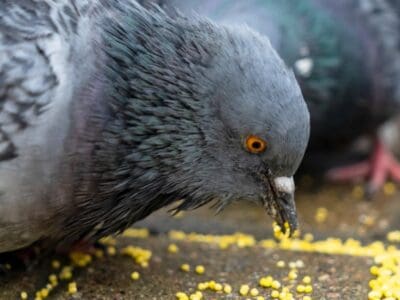Chinese Cobra
Naja atra
Juvenile Chinese cobras have the ability to start hunting almost from the moment they hatch from the eggs.
Advertisement
Chinese Cobra Scientific Classification
- Kingdom
- Animalia
- Phylum
- Chordata
- Class
- Reptilia
- Order
- squamata
- Family
- Elapidae
- Genus
- Naja
- Scientific Name
- Naja atra
Read our Complete Guide to Classification of Animals.
Chinese Cobra Conservation Status
Chinese Cobra Facts
- Common Name
- Chinese cobra or Taiwan cobra
View all of the Chinese Cobra images!
The Chinese cobra is among the most venomous snakes in all of China.
The Chinese cobra, also known as the Taiwan cobra, is a medium-sized species native to Southern China. It is sometimes accidentally mistaken for the relatively harmless rat snake, which does not have a hood. Because of their high toxicity and aggression, they should be approached with extreme caution. This article will cover some facts about the appearance, diet, habitat, and behavior of this snake.
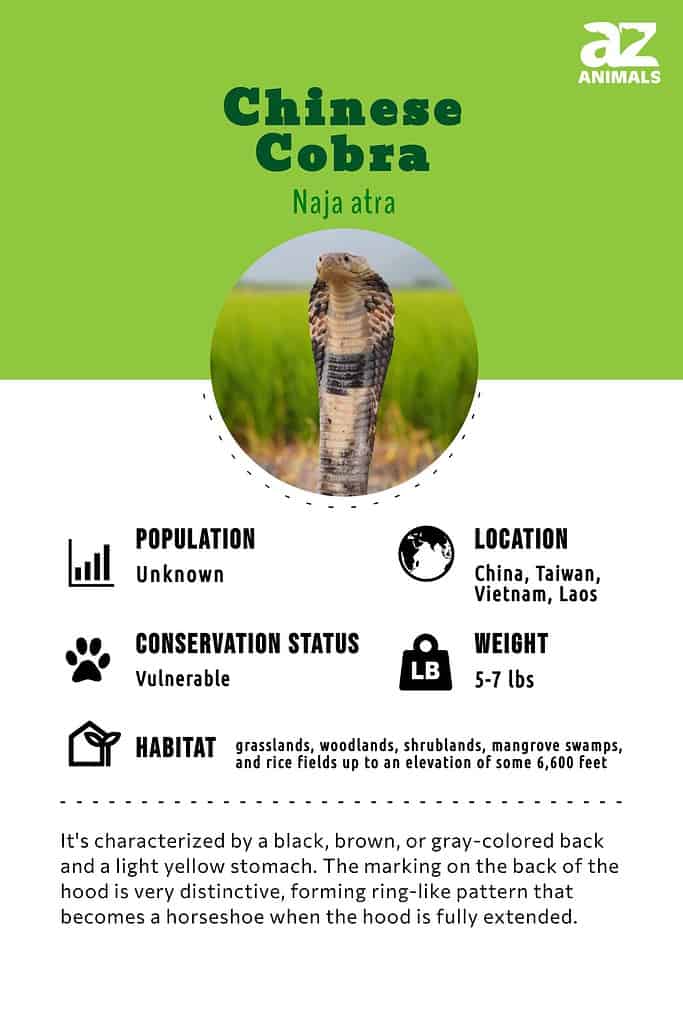
4 Amazing Facts
- The reproductive season of the Chinese cobra usually takes place in the spring. The female will produce anywhere between six and 23 eggs per clutch in the summer. The juveniles can start hunting almost from the moment they hatch from the eggs.
- This snake has short fixed fangs near the front of the mouth.
- This species is sometimes known locally as the Chinese spectacled snake, the long-chinned snake, or the Taiwan cobra.
- This snake can be active during both the day and the night.
Where to Find Chinese Cobras
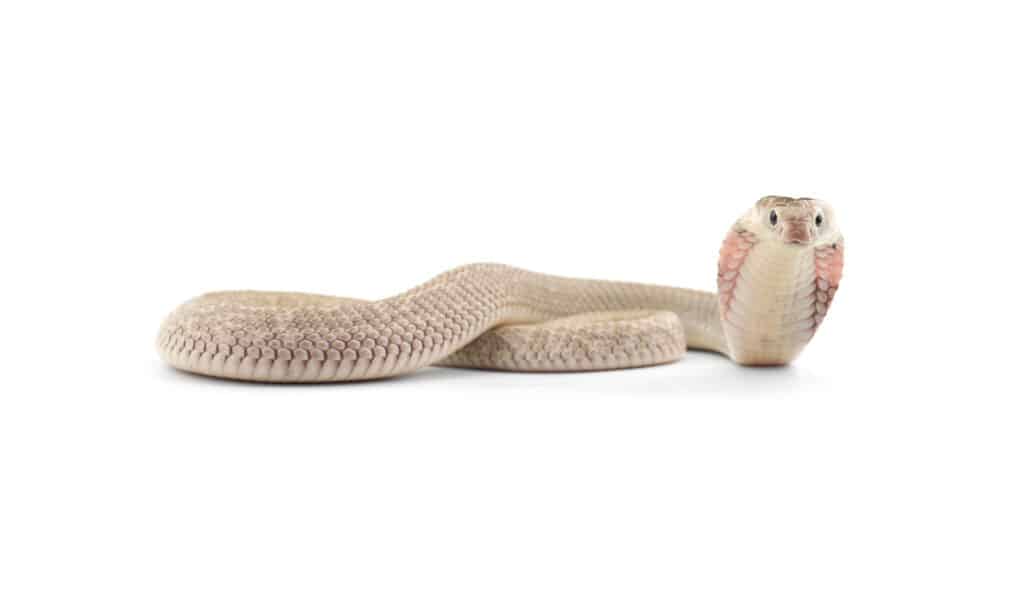
The Chinese cobra is one of the most venomous snakes in China.
©PetlinDmitry/Shutterstock.com
The Chinese or Taiwan cobra is found in many different habitats, including grasslands, woodlands, shrublands, mangrove swamps, and even rice fields up to an elevation of some 6,600 feet. It is particularly common near river banks, lakes, and ponds, where it spends part of the day in hiding. Some of the countries in which it’s found include:
Scientific Name

This snake also goes by the name Taiwan cobra.
©FunnyDive/Shutterstock.com
The scientific name of the Chinese cobra is Naja atra. Naja is derived from the Sanskrit (a South Asian language) word naga, meaning simply snake. Atra is derived from the Latin word ater, which means dark, black, or gloomy. It is closely related to species like the monocled cobra, Indian cobra, and Indochinese spitting cobra.
Evolution and History
Cobras are known to live in Africa and Asia, however, they attract worldwide attention for their unique hood-spreading behavior and deadly toxicity. Specifically in China, this cobra has long been used by people as traditional food and medicine.
In general, snakes have been known to exist starting 128 million years ago. However, some paleontologists discovered snake fossils dating as far back as 150 million years, which is the late Jurassic period. This specific species, the Chinese cobra, evolved from the African spitting species about 2.8 million years ago.
Population & Conservation Status
According to the IUCN Red List, the Chinese cobra is considered to be a vulnerable species. Population numbers have never been properly estimated, but they do appear to be declining. The largest reasons for this decline may include housing and urban development and deliberate persecution.
How to Identify: Appearance and Description
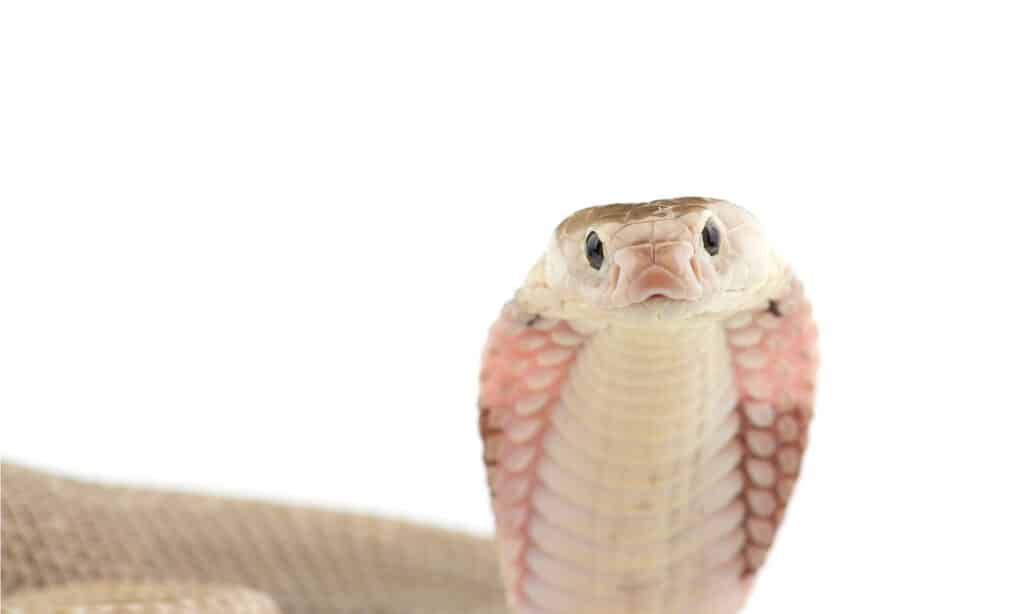
The Chinese cobra has short fangs that are found near the front of its mouth.
©PetlinDmitry/Shutterstock.com
The Chinese or Taiwan cobra is characterized by a black, brown, or gray-colored back and a light yellow stomach. The marking on the back of the hood is very distinctive and distinguishes it from other types of cobras. It forms a kind of ring-like pattern that becomes a horseshoe when the hood is fully extended. Some individuals have faint vertical bands across the entire body as well. This snake can grow up to 6.6 feet long, but the typical length is somewhere around 4 to 5 feet in size.
Here is how to identify the Chinese cobra:
- Long robust body measuring up to 6.6 feet in size
- Large hood with distinctive ring-like or horseshoe markings
- Black, brown, or gray-colored back with or without bands
- Light yellow underside
- Triangular head is the same color as the tail.
- Dark small round eyes
How Dangerous Are They?
The Chinese or Taiwan cobra produces highly toxic venom that attacks both the nervous system and the heart. Symptoms may include pain, swelling, blisters, weakness, headaches, nausea, dizziness, paralysis, and difficulty breathing. Based on statistics, the fatality rate may be somewhere in the range of 15 percent. Fortunately, the anti-venom is highly successful at reducing the chances of death. If tissue necrosis sets in, then it may result in lingering problems years after initial recovery. The snake’s fangs are short but highly efficient at injecting venom into the body. Some snakes may be capable of spitting venom at a distance of more than 6 feet away.
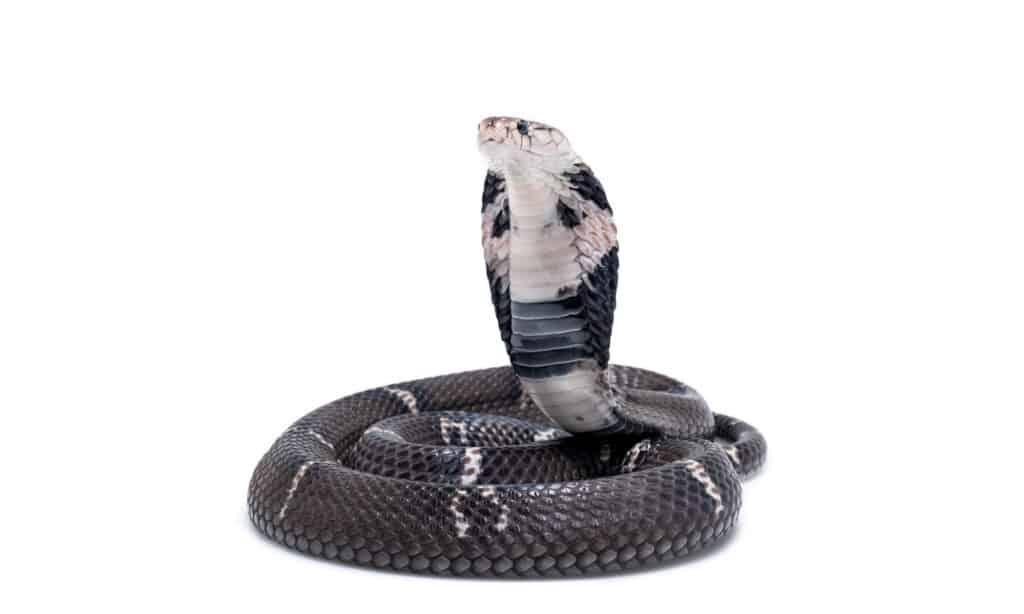
If you accidentally stumble on a Chinese cobra, then you should keep your distance and slowly back away.
©Tino Anttila/Shutterstock.com
Behavior and Humans
The Chinese or Taiwan cobra may be accidentally encountered when out hiking or jogging near the woods. In these circumstances, it will normally choose to run away and hide. Only if directly threatened or cornered will it raise the upper body, spread its hood, and start hissing. If you accidentally stumble on one, then you should keep your distance and slowly back away. They should never be approached in the wild. Occasionally, however, even if you keep your distance, it may rush forward and bite.
Similar Animals
View all 235 animals that start with CChinese Cobra FAQs (Frequently Asked Questions)
Are Chinese cobras venomous?
Yes, they do have the ability to produce venom.
How do Chinese cobras hunt?
The Chinese cobra locates prey with its excellent sense of smell by flicking out its tongue to gather odor molecules. It also has good night vision. They strike quickly and subdue their prey with the highly toxic venom. This snake swallows the prey whole.
Are Chinese cobras aggressive?
Yes, the Chinese cobra is considered to be highly aggressive and deadly. Even though they would prefer to flee at the first sign of trouble, they may also strike without warning.
Where do Chinese cobras live?
The Chinese cobra can be found in many diverse habitats, including grasslands, swamps, woodlands, and even rice fields, in some parts of East Asia.
What do Chinese cobras eat?
The diet of the Chinese cobra primarily consists of rodents, lizards, frogs, toads, and other snakes.
What colors are a Chinese cobra?
The Chinese cobra is characterized by black, brown, or gray colors on the back and light yellow colors on the stomach and underside.
What happens if a Chinese cobra bites you?
Bite victims will most likely begin to experience pain, swelling, blistering, and even tissue death around the skin shortly after the venom is injected. Other general effects include nausea, vomiting, dizziness, headaches, diarrhea, difficulty breathing, and even convulsions and paralysis. Death can occur in a small number of cases. While most of these symptoms will usually clear up after the proper administration of the anti-venom, some tissue death and damage may persist if the venom is allowed to work throughout the body.
Thank you for reading! Have some feedback for us? Contact the AZ Animals editorial team.
Sources
- Hong Kong Snake ID, Available here: https://www.hongkongsnakeid.com/chinese-cobra
- Live Science, Available here: https://www.livescience.com/43520-cobra-facts.html









